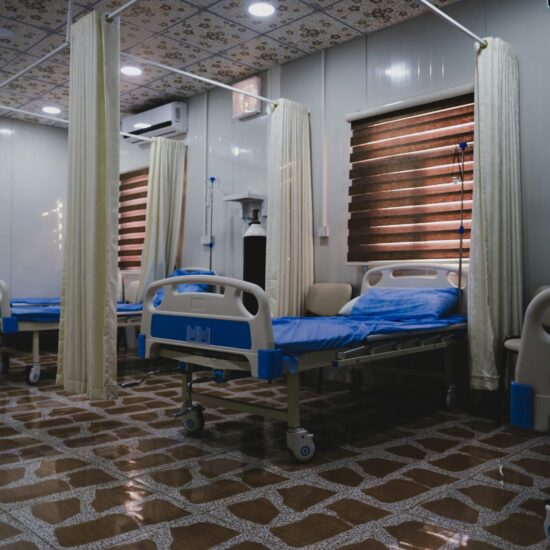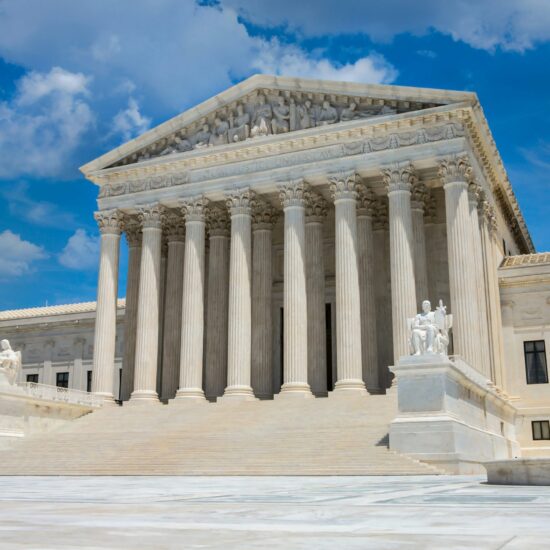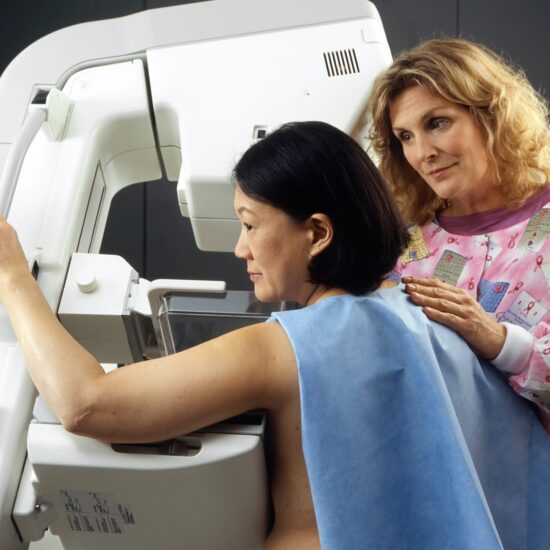By now, you probably know of actress Angelina Jolie’s choice to undergo preventive double mastectomy, and her must-read op-ed in Monday’s New York Times.
In her specific case, the decision was a tough, but logical one given that the benefits of the procedure dramatically reduced future risk of breast cancer. It’s never an easy decision to undergo surgery. It must have been even more difficult for someone like Jolie, whose income is partly tied to her looks.
Double mastectomy isn’t the answer for everyone. Jolie was at very high risk because she is among the small percentage of women who carry the BRCA 1 and BRCA 2 gene mutation.
As Jolie points out, genetic testing is expensive, currently not covered by all insurance plans, and therefore only viable for a small segment of the population. “The cost of testing for BRCA1 and BRCA2, at more than $3,000 in the United States, remains an obstacle for many women.” There are other forms of breast cancer – which may be more difficult to detect and treat.
What are the choices for those women who do not have the resources for such gene testing? Disparities along racial, education, and socioeconomic lines in both incidence and screening are well documented. Women who have other risk factors, who are without access to the top oncologists, plastic surgeons, and other care providers need to know their choices.
Many breast cancer advocates encourage regular mammograms, along with clinical and breast self-exams. Planned Parenthood provides women with screening, diagnostic and care resources, regardless of income or insurance status. The National Breast and Cervical Cancer Early Detection Program (NBCCEDP), funded through the CDC, provides screening services for underserved, uninsured and underinsured women in all 50 states, the District of Columbia, several US territories and Alaskan/Native American organizations. The American Breast Cancer Foundation is another of many groups that also provide financial support for screenings.
Screenings may not be the answer either. Debate on the risks vs. benefits of mammograms continues. Recent evidence points to higher rates of over-diagnosis and unnecessary treatments than was previously reported. There are also legitimate concerns about radiation exposure. In April, New York Times reporter Peggy Orenstein wrote about her diagnosis and battle with the disease, honestly discussing her shift in thinking about mammograms as protocol for low-risk women in their 40s.
While mammography continues to be the standard screening tool, several alternatives already exist, and researchers are busily working on others, including a cancer-detecting bra. Really.
Some women at high risk who choose not to undergo mastectomies opt for preventive chemotherapy, which uses tamoxifen or raloxifene to block certain estrogen receptors. This regimen comes with numerous side effects, again forcing the risk/benefit decision. Organizations like Breast Cancer Action advocate for research on less toxic treatments and encourage women not to buy into the “hype” of pink ribbon marketing. Others like the National Breast Cancer Coalition want more more seats at the research and policy decision-making tables for breast cancer patients.
Provisions in the Affordable Care Act mandate coverage for breast cancer screenings, which will benefit many – but not all – women who are currently uninsured. It also requires some private insurance to cover genetic testing and counseling for women at high risk due to family history of breast or ovarian cancer.
Which leads back to decision-making. If women at high risk for cancer get tested and have the BRCA1 or BRCA2 gene, what then?
Jolie encourages women to “seek out the information and medical experts who can help you through this aspect of your life, and to make your own informed choices.”
There’s a saying that knowledge is power. Jolie said, “I feel empowered that I made a strong choice that in no way diminishes my femininity.” She has access to the best health care money can buy.
All women need similar access to the best information, guidance and care so they can make their own strong choice.









Stacy Malkan / May 14, 2013
Yes women should have all the information toile empowered decisions, but the responsibility should not be on women. It is the responsibility
/
Stacy Malkan / May 14, 2013
(Cont) It is the responsibility of society — of all of us — to demand that companies stop producing, using and putting carcinogens into our products and environment. Avon, Estée Lauder, Revlon that means you! See http://www.safecosmetics.org for more…
/
Sharon Stanley / May 14, 2013
Being tested for the gene requires therapy by the genetic counselors, that will explain some ramifications of the positive result before the drawing of blood. Most doctors will not recommend the testing unless there are more than one person on the same branch of the family tree who have had ovarian and/or breast cancer.
I was recently told that now they are testing any women with a cancer diagnosis for the gene. One friend of mine, a seven year survivor, just recently got tested for the gene. She was negative. It is rare; only 1% of Breast Cancers are genetic. Yet 90% of women with this gene mutation are of Ashkenazi Jewish descent. That ethnic group, in particular, needs to be vigilant and informed.
Many women do not want to be tested because they do not want to deal with the difficult decisions that may need to be made. Or decisions they choose not to make. I have had friends say to me, “I know I should be tested, but I don’t want to know.” I understand that outlook.
Surveillance is not a cure just an early detection. The problem with BrCa cancers is that they are quite aggressive, like the Ovarian cancers that are also a problem with BrCa mutations.
I was told by my doctors that Tamoxifen is not a good option because Tamoxifen targets breast areas where BrCa cancers usually do not begin.
As a BrCa 1 patient, I made the same decisions that Angelina made. It is never an easy decision, but we both agreed it was better than hearing those words: “You have cancer.” For me, I was more afraid of receiving Chemotherapy if I developed cancer, then the preventative surgery. But I understand if other women do not agree with our decision.
I applaud Angelina’s candor and I also applaud her husband and family, who showed her the same love and support I was shown by my husband and family.
/
Liz Seegert / May 14, 2013
Sharon, thanks so much for sharing your story and insight. You were fortunate to be able to make an informed choice. As I pointed out, too many women don’t have the opportunity, to do the same. And if they do get tested but are uninsured or underinsured, can they afford treatment, regardless of which path they choose?
I also applaud Angelina for going public; at the very least, more women will become aware of risk factors and options. It’s unfortunate and sad that health disparities still exist at the levels they do. I hope this type of dialogue spurs policy makers to address that dilemma and put more money into research, prevention and treatment.
— LIz Seegert
/
Amanda Anderson, RN (@12hourRN) / May 15, 2013
Thanks for this!
The real story of Angelina — “Women who have other risk factors, who are without access to the top oncologists, plastic surgeons, and other care providers need to know their choices.”
Bravo!
/